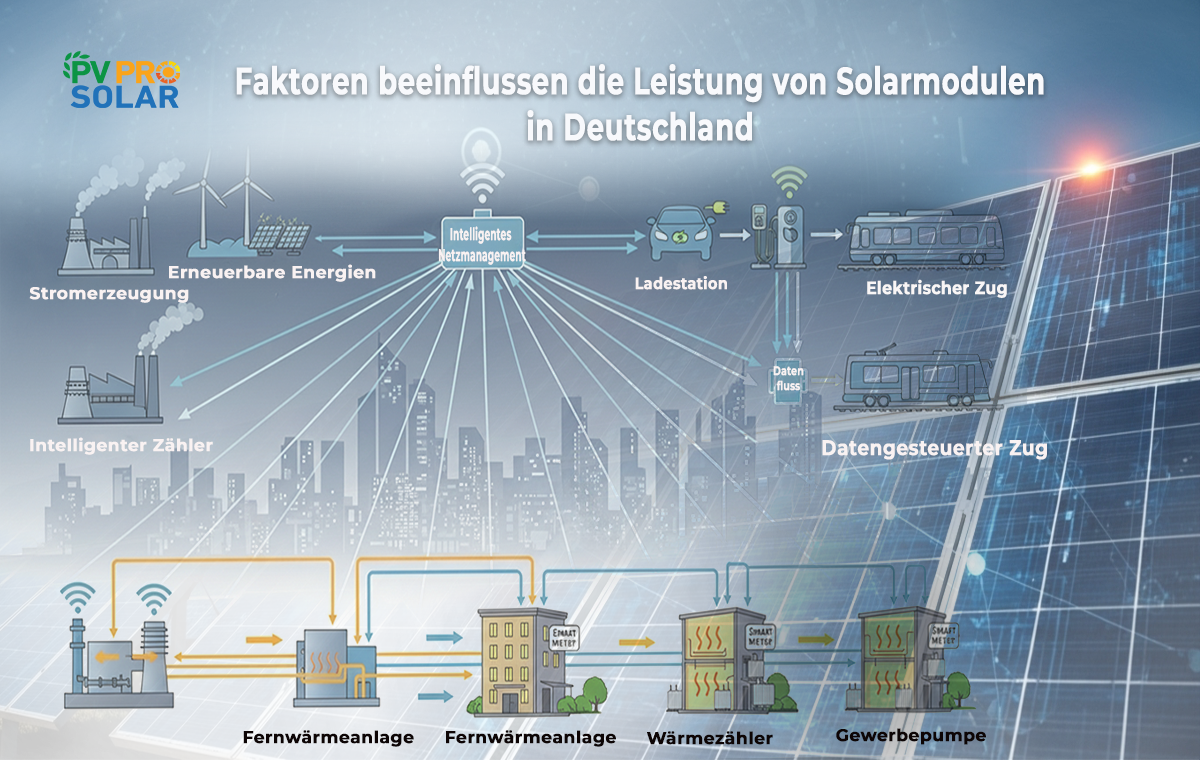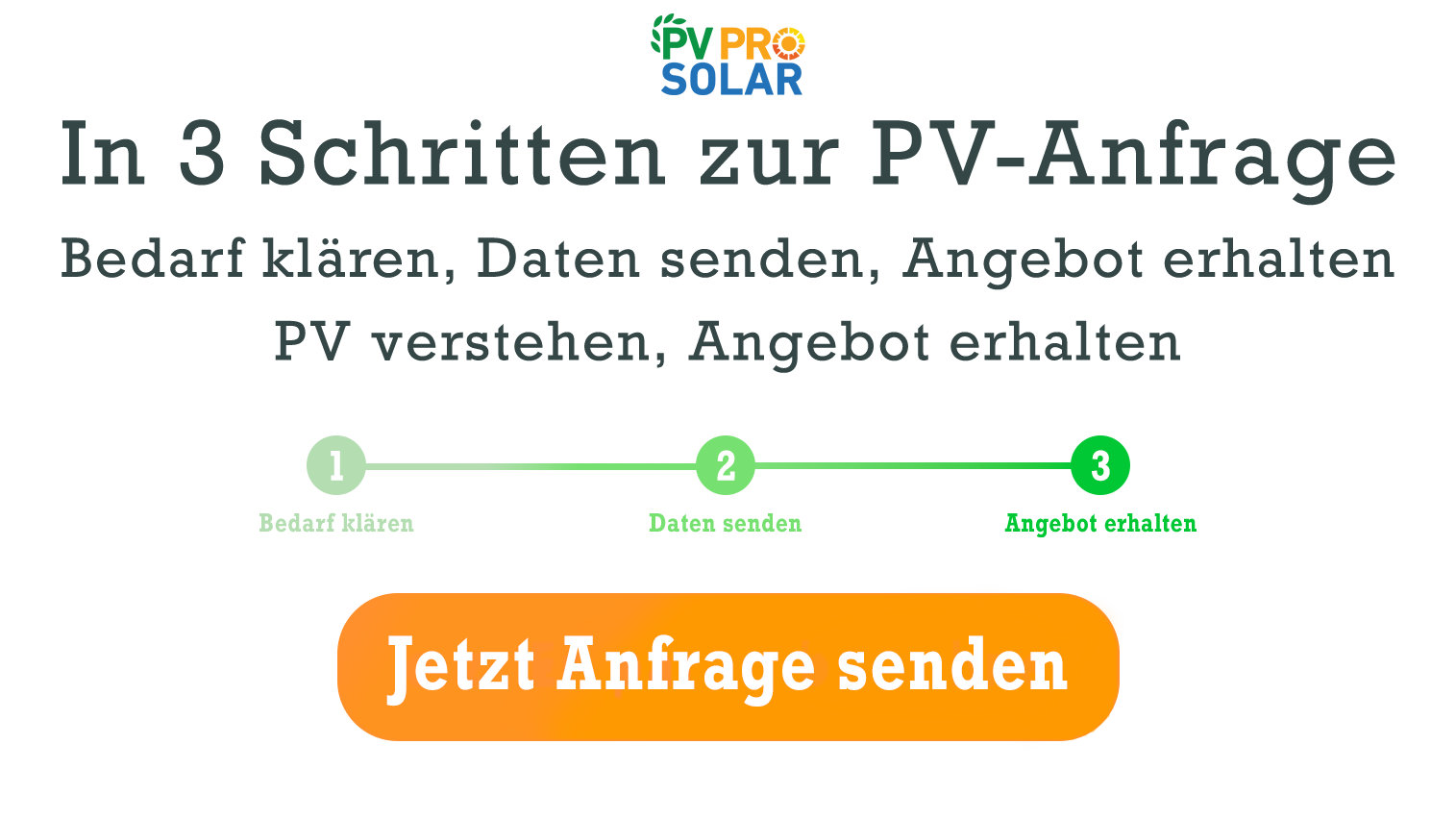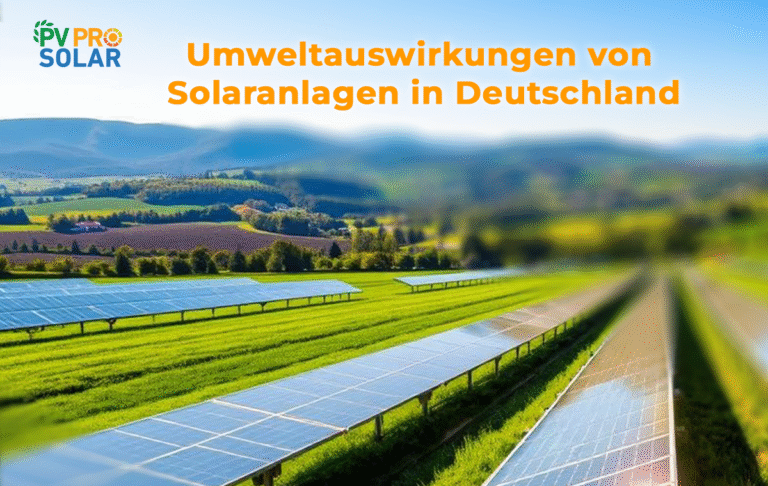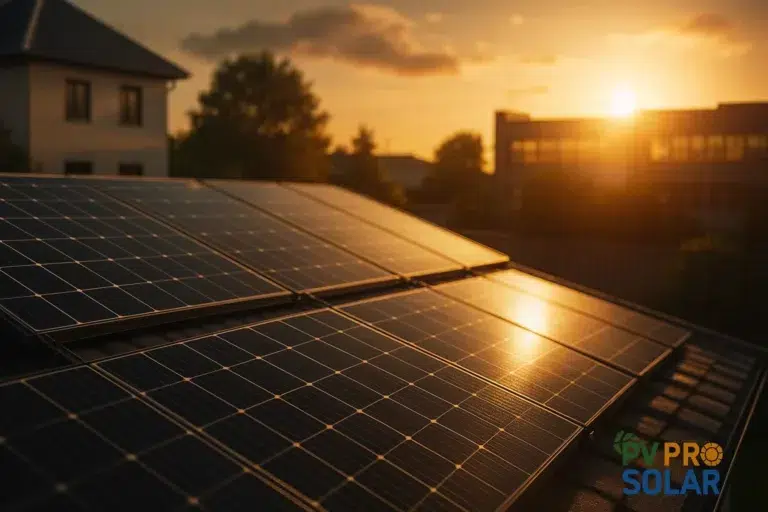What Affects Solar Panel Performance in Germany?
Calculating solar power production is a crucial step for anyone investing in photovoltaic systems or evaluating their efficiency. Germany presents a unique challenge due to varying climatic conditions and regional differences in sunlight. This comprehensive article explains how to accurately estimate solar energy output using scientifically based methods, practical examples, and modern software tools. By understanding these factors, you can ensure an economically viable and sustainable energy supply for your home or business.
How is Solar Power Production Fundamentally Calculated?
The basis for calculating solar energy output uses a simple formula, accounting for multiple influencing factors:
Solar energy yield (kWh) = Rated power (kWp) × Solar irradiation (kWh/m²/year) × Performance Ratio (PR) × Adjustment factors
- Rated Power (kWp): Represents the maximum power a photovoltaic system can generate under standardized laboratory conditions. Calculated by summing the capacities of all modules.
- Solar Irradiation: Solar radiation in Germany varies by region, measured in kWh per square meter per year. Higher values mean more potential energy production.
- Performance Ratio (PR): Indicates system efficiency in converting sunlight into usable electricity. Accounts for losses from inverters, module aging, temperature effects, and shading. Typical values are 75–85%.
- Adjustment Factors: Include roof slope, orientation, technical system parameters, and local weather conditions.
How Does Solar Irradiation Impact Energy Yield in Germany?
Solar irradiation varies significantly across regions:
| State | Solar Irradiation (kWh/m²/year) |
| Bavaria | 1050–1175 |
| Baden-Württemberg | 1050–1150 |
| Lower Saxony | 950–1025 |
| Berlin | 950–1050 |
| Hamburg | 900–1000 |
These numbers directly affect how much energy a system can produce at each location.
How Do I Determine the Rated Power of My Solar System?
Multiply the number of modules by the power of one module:
Example:
-
- Number of modules: 15
- Power per module: 320 W (0.32 kWp)
- Total: 15 × 0.32 kWp = 4.8 kWp
What is the Performance Ratio and Why is it Important?
The PR measures actual output versus theoretical maximum under ideal conditions. Losses arise from:
- Inverter and wiring inefficiencies
- Module temperature increases
- Shading from buildings or trees
- Module aging and dirt
Typical PR in practice is 0.75–0.85 (75–85%), making it essential for realistic yield calculations.
What Methods Exist to Calculate Solar Power Production?
- Rule of Thumb: 900–1100 kWh per kWp annually in Germany.
- Mathematical Models: Include irradiation, module efficiency, temperatures, and other parameters.
- Software Simulations: Tools like PVGIS, PVSyst, or SAM simulate site-specific yields accurately.
- Data Analysis: Use existing system measurements to calibrate forecasts.
- Online Calculators: PVProSolar GmbH calculator considers location, module orientation, and roof tilt.
- Standards and Guidelines: DIN norms and BSW recommendations provide a reliable calculation framework.
Which Software Tools Help Simulate Solar Energy Production?
- PVGIS: Free EU Commission tool for solar data in Europe.
- PVSyst: Professional software for PV system planning and simulation.
- SAM (System Advisor Model): US Department of Energy tool for detailed simulations.
- PV*SOL: 3D simulation software, ideal for shaded roofs.
- PVPro Solar Tools: Customized for German conditions.
How Do Environmental and Technical Factors Affect Energy Production?
Key factors:
- Shading: Partial or full shading drastically reduces output.
- Module Temperature: Above 25°C, efficiency drops ~0.5% per degree.
- Roof Tilt and Orientation: Optimal slope 30–35°, ideally south-facing.
- Inverter Quality: Efficiency and aging affect DC-to-AC conversion.
- Dirt and Debris: Dust, leaves, or snow reduce performance.
- Aging: Modules lose 0.5–1% efficiency per year.
How Can I Accurately Estimate Solar Production for My Home or Business?
- Determine location: Consider sunlight hours and irradiation.
- Calculate system capacity: Determine modules and total kWp.
- Include technical losses: Apply PR factor.
- Adjust tilt and orientation.
- Account for dirt and shading.
- Use simulation software or online calculators.
Example: 10 kWp system in Munich (≈1100 kWh/kWp annual yield), PR 80% → 10 × 1100 × 0.8 = 8,800 kWh/year
Which Legal and Regulatory Requirements Should I Consider?
- Renewable Energy Act (EEG): Governs feed-in tariffs and grid access.
- DIN VDE Standards: Technical and safety requirements.
- VDE-AR-N 4105: Grid connection rules.
- State Incentives: Often linked to minimum system requirements.
How Can I Calculate the Financial Viability Based on Solar Production?
- Total installation cost (including maintenance)
- Expected annual solar yield (kWh)
- Electricity price or feed-in tariff
- Energy cost savings
- Payback period
- Environmental benefits (CO2 reduction)
Accurately calculating solar power production is essential for planning and the successful operation of photovoltaic systems in Germany. Using current methods and tools, you can precisely estimate your system’s output, optimize system size, and assess economic feasibility. This ensures long-term benefits, reduces environmental impact, and maximizes returns from renewable energy investment.
Accuracy depends on the quality of the location and technical data. Professional simulations typically provide ±10% accuracy.
For simple estimates, online calculators are sufficient. For larger projects and financial planning, professional guidance is recommended. How accurate is the solar power production calculation?
Can I calculate solar production myself or do I need an expert?









